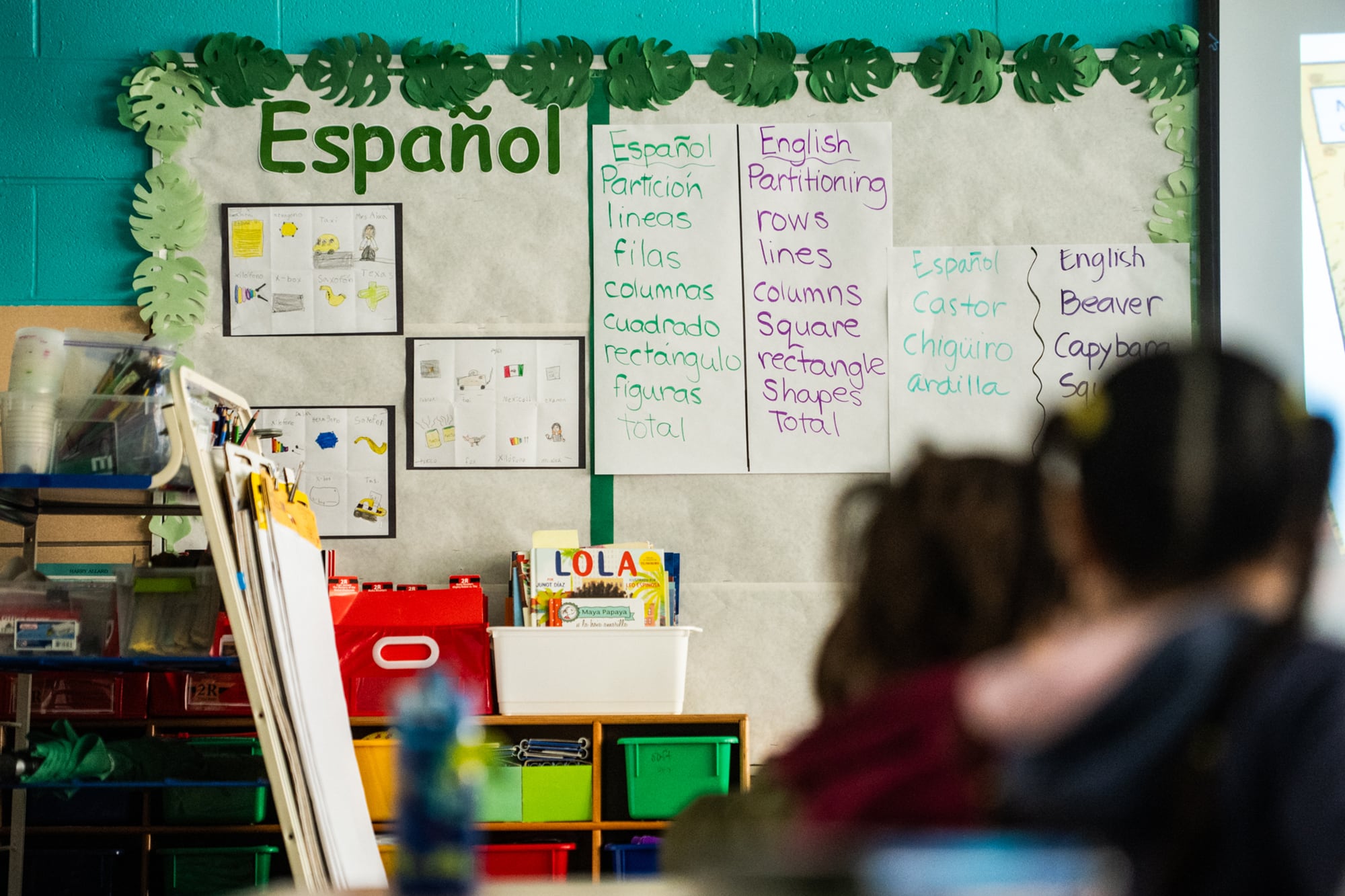Sign up for Chalkbeat Chicago’s free daily newsletter to keep up with the latest education news.
Chicago students who had been English language learners and became fluent in English by ninth grade graduate and enroll in college at higher rates than their peers, according to a new study released Wednesday by the University of Chicago Consortium on School Research.
Those findings go along with an earlier study that found similar trends in elementary school, where students who had been English language learners and later mastered English tended to do better in school than their native-English-speaking peers.
However, the authors of the new study stress there is more to the story — and more types of students to pay attention to.
The study found that high schoolers who are still learning English as a new language are less likely to graduate on time compared to the district average, but have GPAs and SAT scores that vary when compared to their peers. Those outcomes vary based on how long the students have been classified as English language learners or how long they’ve been in the United States.
The study comes as CPS continues to welcome migrant families and far more English learners than it has in the past, at a time when President-elect Donald Trump is threatening mass deportations. This school year, the district’s share of English language learners grew by more than 12% — higher than any other student group. (English language learners are not necessarily newcomer immigrant students.)
Chicago Public Schools did not respond to a request for comment in time for this story.
The authors crafted the study in part because publicly reported data about student outcomes, such as graduation rates, only focuses on current English language learners without digging deeper into that group or looking at students who have exited English language learner status through testing, said Marisa de la Torre, managing director and senior research associate at the consortium who helped author Wednesday’s report.
“The way we report the data — it really hides all these successes,” de la Torre said. “At the same time, I think with this report we also highlight the need to offer more nuance about the active English learners because they might need supports in different ways.”
The study looked at about 78,500 kids who graduated from high school between 2014 and 2016. Of those students, 7,950 were learning English as a new language, and another roughly 18,000 had formerly been classified as English language learners but had since exited that status by ninth grade.
They found that former English language learners tended to have better grades and graduated at a better rate than students citywide. They also were more likely to enroll in and persist through two-year colleges, and enrolled and persisted through four-year colleges at a rate similar to the rest of CPS.
In contrast, late-arriving English learners — those who had been in CPS for fewer than six years by ninth grade and continue to learn the language — graduated at lower rates than the district average but had higher GPAs. However, these students were more likely to enroll in and make it through a two-year college than the district as a whole.
High schoolers who were long-term English learners — those who have been in CPS for at least six years and were still learning English as a new language by ninth grade — had far lower graduation rates and GPAs when compared to the district as a whole and were less likely to enroll in and persist through college. And long-term English learners with disabilities also far underperformed compared to district averages, but earned GPAs and graduated at rates similar to native English speakers with disabilities.
More detailed highlights include:
- Former English learners graduated at a rate of 88% — four percentage points higher than all students. Their average SAT score of 1003 and GPA of 2.9 were slightly higher than the district averages (977 for the SAT and 2.81 for GPA).
- Late-arriving English learners graduated at a rate of 81%, three points lower than the district average and even lower compared to kids who were former English learners. Their average GPA was 2.87, similar to former English learners and higher than the district average, but their average SAT score of 882 fell below both groups.
- Kids who were long-term English learners without disabilities graduated at a rate of 74%, or ten percentage points lower than their peers. Their average SAT score of 838 and GPA of 2.5 fell below district averages.
- Long-term English learners with disabilities graduated at a rate of 69%, far below the district average but just one point lower than the average for native English speakers with disabilities. Their average GPA of 2.55 and SAT score of 771 fell far below the district average and other types of English learners but was again on par with native English speakers with disabilities.
The study spurs the question of what sort of support is missing for current English learners who might be struggling to graduate on time or earn grades as high as their peers, de la Torre said.
For example, could newcomer immigrant students who are English learners be more likely to miss school? Students in shelter, for example, may find it difficult to get to school on time or at all given barriers with accessing stable housing or transportation.
Transitional bilingual programs, which teach students in their native language and ease them into English, are required by state law in schools that enroll 20 or more English learners who speak the same native language, such as Spanish. But Chicago Public Schools and other Illinois districts have routinely violated those laws, with many schools failing internal audits that track whether a school has enough staffing and provides the correct instruction to English learners in these programs.
The study’s authors shared several takeaways from their study, including understanding what long-term English learners need to succeed in high school and that standardized test scores may not be a good indicator of English language learners’ potential.
They noted that late-arriving English learners struggle with tests but their grades were higher than the district average.
One of de la Torre’s biggest takeaways from the study was the relatively high average GPAs for former English language learners, which are close to 3.0. That’s a figure, she said, that “actually signals that they are ready to engage in college more.”
Reema Amin is a reporter covering Chicago Public Schools. Contact Reema at ramin@chalkbeat.org.






